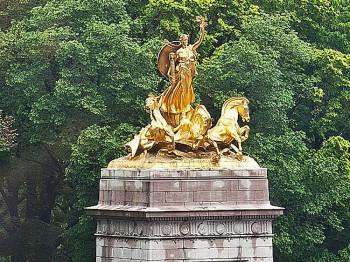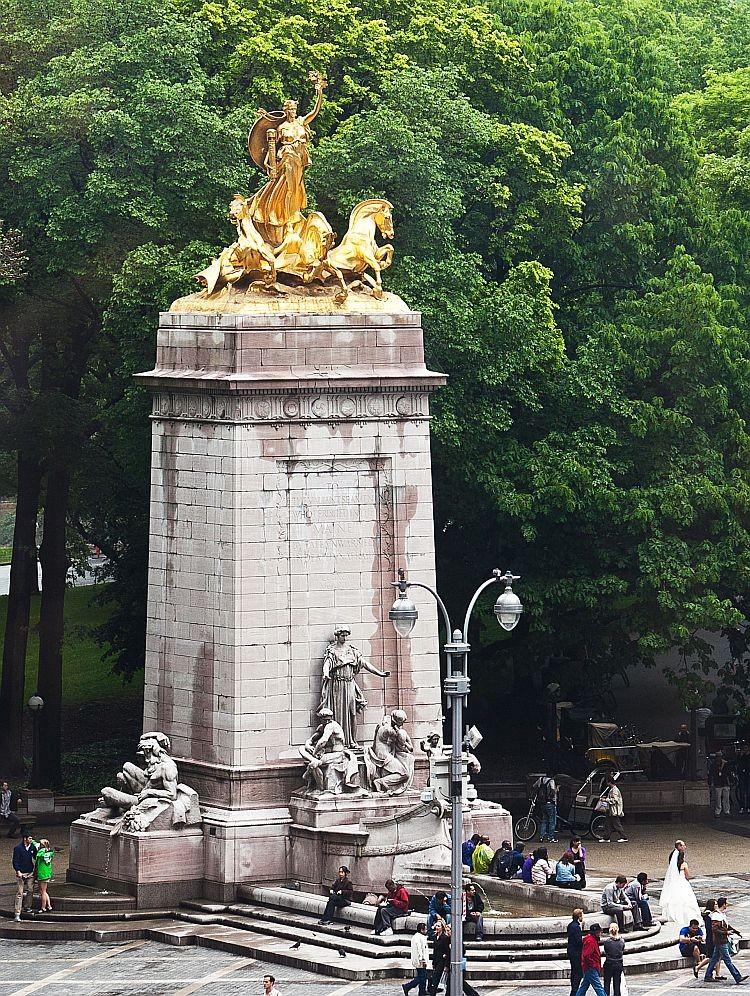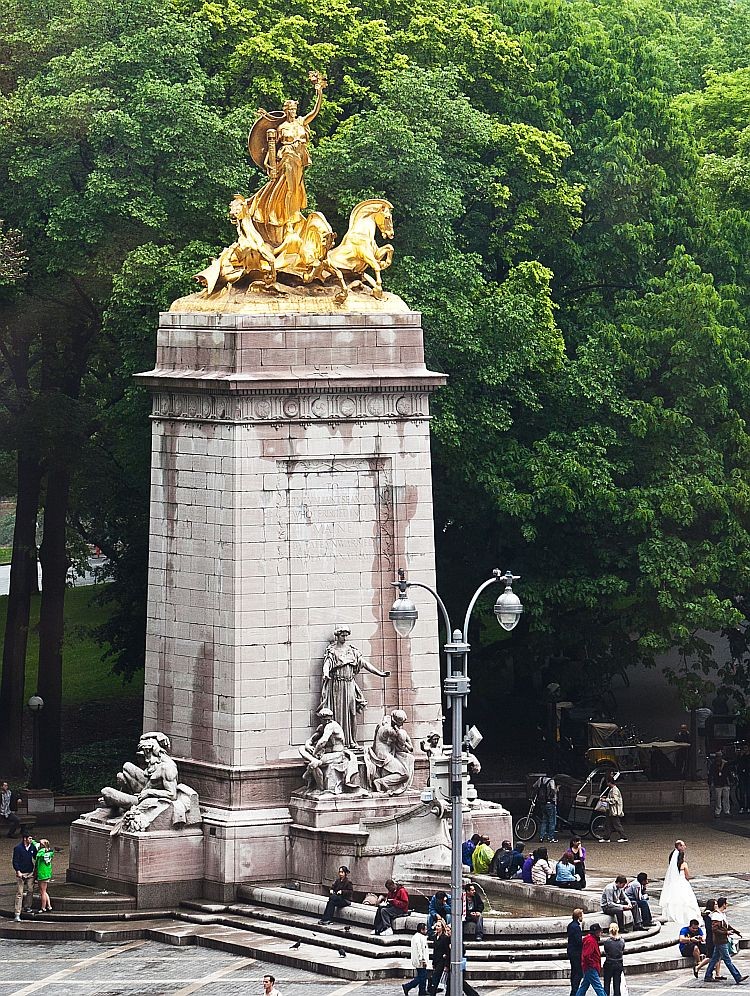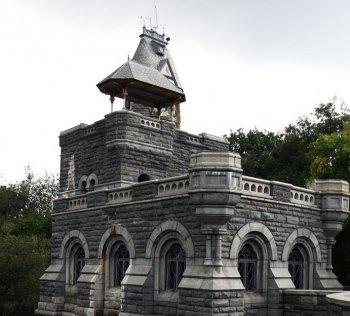USS Maine Monument
Merchant’s Gate entrance of Central Park, at Columbus Circle
Architect: H. Van Buren Magonigle, Attilio Piccirilli, sculptor
Year built: 1913
NEW YORK—In January 1898 the U.S. battleship Maine traveled to the port of Havana during a Cuban revolt against the Spanish government. A few weeks later, on the evening of Feb. 15, the ship exploded and 260 American sailors died. The ship had been constructed in the Brooklyn Navy Yard. No explanation was ever found for the explosion, which happened while many of the sailors were asleep. The ship sank swiftly and a couple of months later the United States was at war with Spain, and “Remember The Maine!” became a rallying call during the Spanish-American War.
Newspaper publisher William Randolph Hearst launched a donation collection and design competition to build a monument to the Maine. Donations poured in from across the country and architect H. Van Buren Magonigle and sculptor Attilio Piccirilli won the design competition. The two also worked together on the Fireman’s Memorial at 100th Street and Riverside Drive.
Hearst originally intended that the monument would be located in lower Manhattan looking out at New York Harbor, it was then decided to build the monument in Times Square, but a clerical error resulted in the site being unavailable; it was then decided to build it near Columbus Circle at the Merchant’s Gate entrance to Central Park.
The massive 44-foot tall limestone pylon is a fine compliment to the tall column topped with a statue of Christopher Columbus in the center of Columbus Circle. At the top of the monument is a gilded statue of Columbia Triumphant that was cast in bronze and recovered from the guns of the ship. She rides the waves on seashells and is led by seahorses. The aquatic theme is represented throughout the sculptures and decorations. At the base of the monument a ship’s prow extends over a fountain, a favorite gathering place for park visitors. At the bow of the ship a young boy with arms spread wide represents Victory, he is joined by other allegorical figures, including Peace, represented by a central female figure, to her left is the male Courage figure and to her right is Fortitude, a female statue. The Atlantic and Pacific oceans are represented by figures on the left and right side of the monument.
New York City Structures: USS Maine Monument
NEW YORK—In January 1898 the U.S. battleship Maine traveled to the port of Havana during a Cuban revolt against the Spanish government.
Save

THE MAINE: A monument to the 260 sailors that died in the 1898 explosion on the USS Maine at the south west entrance to Central Park. Amal Chen/The Epoch Times
By tim.mcdevitt
Updated:



